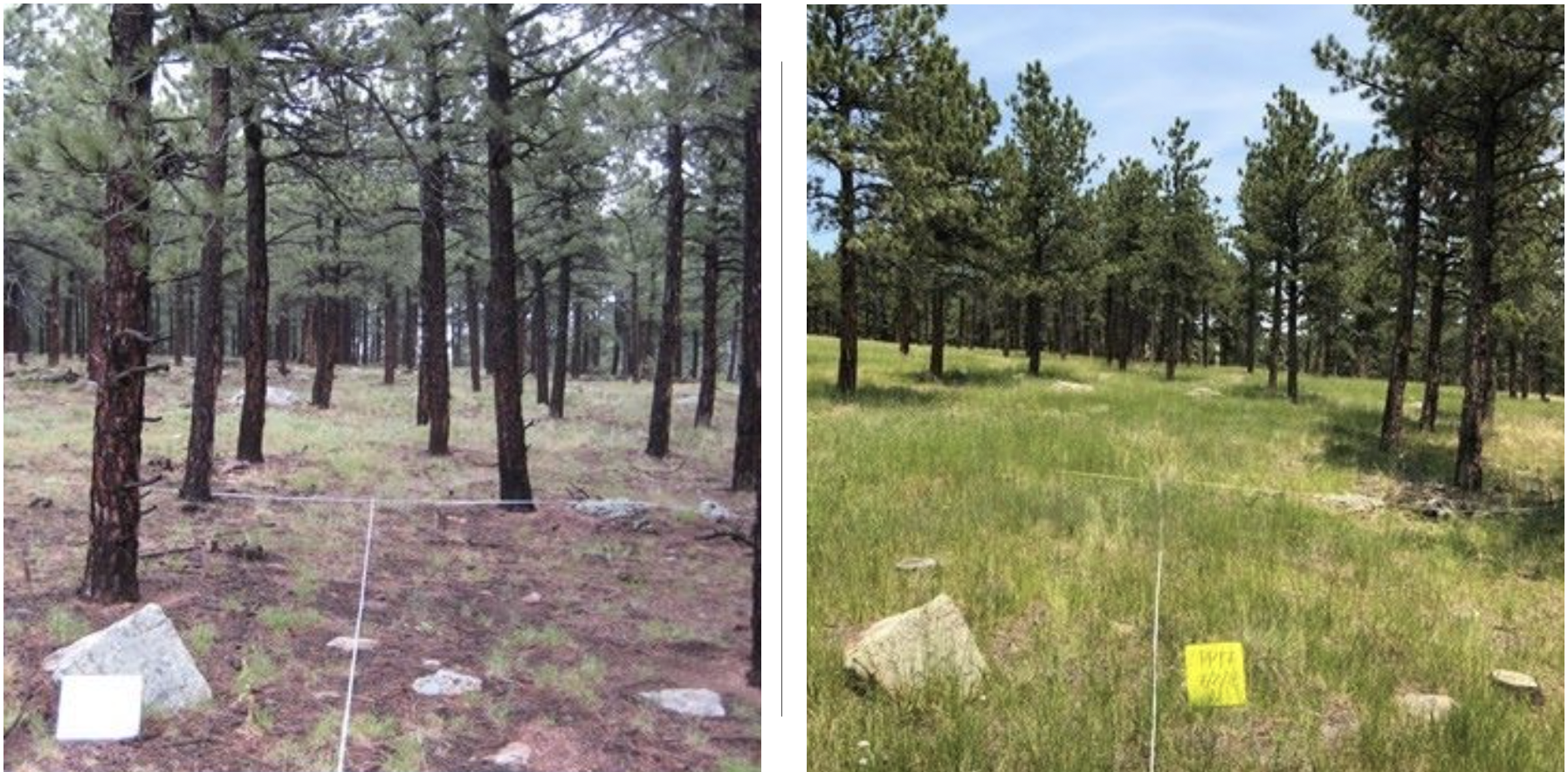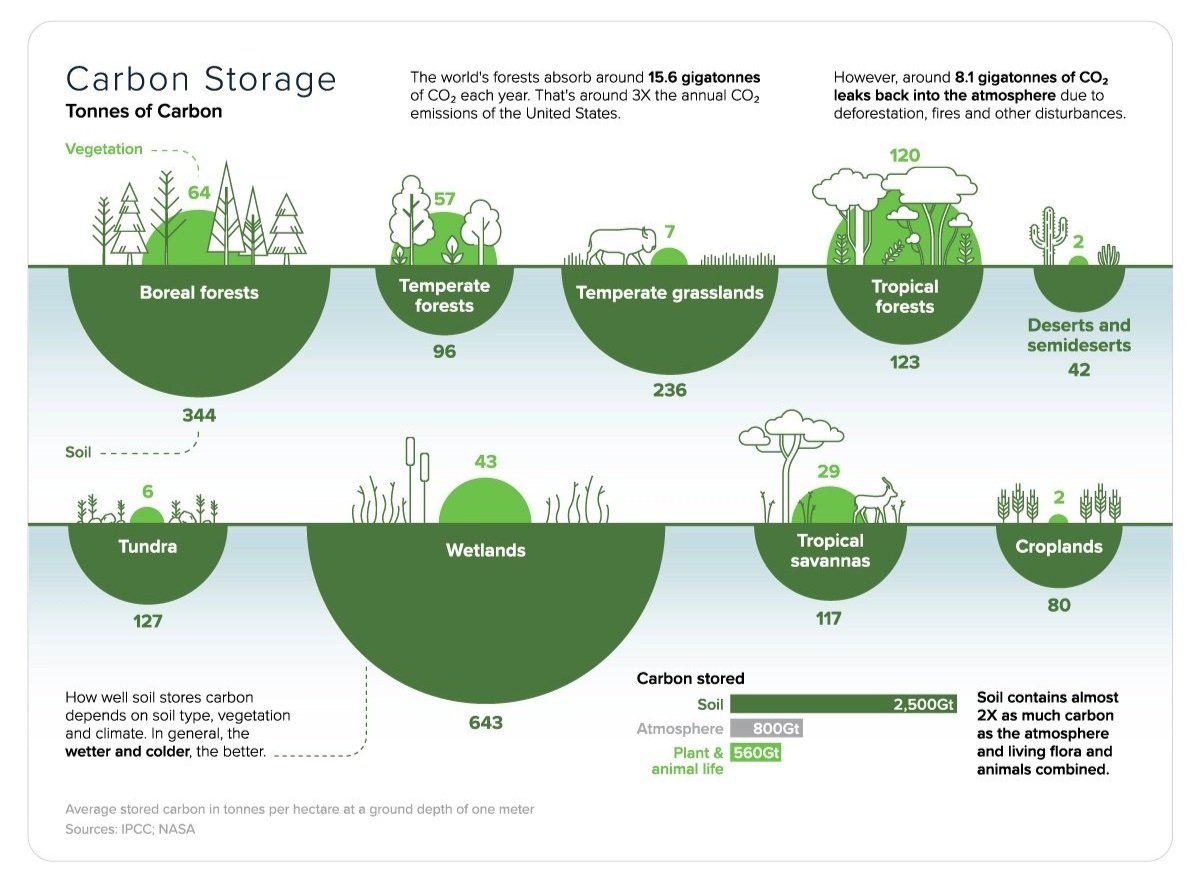Community Based Natural Climate Solutions
Natural climate solutions are conservation, restoration and improved land management actions that increase carbon storage or avoid greenhouse gas emissions in landscapes and wetlands across the globe.
Forest management in the foothills region.
The outcomes of current wildfires in our foothills are generating new landscapes. Proactive fuel reduction management actions are concurrently generating similar landscapes, most common of which is the Ponderosa pine savanna. To minimize wildfire risk the foothills region must include boundaries that inhibit fire transfer and reduce the probability that these can be breached by the catastrophic fires observed in recent years.
How does a Ponderosa savanna compare to a closed canopy forest in terms of soil carbon (active zone, to a depth of 20 cm in our region)? There’s reason to believe that these systems will store more carbon.
To what extent can rewetting activities (expansion of riparian zones, repair of erosion gullies, construction of debris dam collectors in preparation of next fire, etc). affect both carbon and biological diversity of these actions? Hypothesis: Riparian expansion will enhance carbon drawdown, develop more resilient vegetation cover, and enhance biological diversity of managed areas (Peet 1981). Erosion control structures, normally installed post-wildfire in the Front Range, also can function as landscape rewetting structures. Conversely, rewetting structures installed in unburned landscapes can subsequently function to reduce erosion and sediment flow from areas that are subsequently burned.
Grassland Management Actions
In December of 2021 a grassland fire, fanned by extreme winds, destroyed over 1000 homes and did over $2B in damage in a community in Boulder County. Reducing the probability of a repeat of this activity is a clear priority and a subcomponent of the developing CWPP for the Boulder County area.
While we know that short-statured, green vegetation does not transport fire well, the heterogeneity of the Front Range grasslands precludes a quick solution of this sort. How do these relate to other natural climate solutions proposed for this region? What are the trade-offs between fuel load, carbon storage/soil loss, and biodiversity? How do they vary across the Boulder landscape depending on grassland type and modelled fire risk? How is fuel reduction related to variation in plant traits that influence leaf dry matter (or alternatively foliar moisture content), and is this another potential avenue for mitigation?
These may be quantified with data that we already have. Fuel load can be estimated with NDVI from remote sensing (30-yr, seasonally) and related to long-term plant biodiversity monitoring as well as Soil C.
How do fire risk mitigation interventions affect the trade-offs in the necessary fuel load reduction window?
a. Cattle grazing
b. Mowing
c. Seeding with high moisture foliar content species
d. Rewetting landscape positions
e. Prairie dog interactions
Fuel reduction plans include creating grassland WUIs that are mowed or grazed by combinations of native and domestic grazers. Wetting landscapes, an activity associated with agriculture, and rewetting landscapes, an activity largely focused at bottomland and riparian areas (2019), can be potentially expanded to enhance the potential for year-around green boundaries at WUI areas.
We have limited information on how each potential intervention affects fuel loads (at differing intensities, frequencies), fuel moisture content, biodiversity carbon storage. A pilot project could include small-scale implementations of these interventions (perhaps in a couple landscape types) and measure fuel/aboveground biomass, water content, plant (+other) diversity, SOM/below ground root biomass, soil loss. Burn boxes could be a test of predictions from the fire model. These pilot tests could be conducted in several landscape types that we have reason to believe will vary in response, and could be open as demonstrations for the public.


